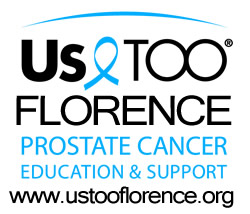|
||||||||
| Home | News You Can Use |
About Us TOO Florence |
Personal Journeys | Slideshows | Contact Us | |||
| Each man's Journey is listed under his BASIC treatment. When you click on one of the names to read a particular Journey, you may see one or more different treatments in bold lettering immediately above the Journey text. You will see (Recurrence) if they are due to a recurrence. Otherwise, they will be treatments used in conjunction with the basic treatment, i.e. Lupron with External Beam Radiation or External Beam Radiation with HDRT/Brachytherapy, etc. | |
Active Surveillance Alternative (Natural) Therapy Cryoablation - Freezing Hormone Therapy Radiation - Brachytherapy Radiation - External Beam Radiation - HDRT Surgery - Open Surgery - Robotic |
For many years I was told, during my annual physical exam, that my prostate was enlarged. However, in spite of that, my PSA test was always within the normal range for my age. As a consequence of the enlarged prostate, I had several urinary infections (UTIs) due to incomplete emptying of my bladder. In June 2009, unable to urinate at all, I went to the emergency room. Another UTI was diagnosed and a catheter was inserted into the bladder. A half-gallon of urine was drained and I was fitted with a collection bag. This meant the catheter would remain in place to prevent another urinary blockage until I saw a urologist. The attending physician made an appointment for me with Dr. Kollmorgan at the Oregon Urology Institute. After an ultrasound of my bladder, Dr. Kollmorgan gave me catheters to use at home. My instructions were to urinate naturally as well as I could, then catheterize myself and measure the volume of remaining urine. Typically, I'd get 700 to 900 ccs in the morning, then somewhat less later in the day. I still could not urinate on my own. At my next appointment, about three weeks later, we decided to try a transurethral resection of the prostate (TURP) procedure, also affectionately known as "roto-rooter." The purpose of the TURP is to enlarge the urethra as it passes through the prostate. As a prostate enlarges, it compresses the urethra making it more difficult, if not impossible , for the urine to flow through it and empty the bladder . That is what was happening in my case and corrective measures needed to be taken. After the TURP was done, Dr. Kollmorgan was satisfied that the channel was now wide open. The pathologist, upon examining the prostate tissue which Dr. Kollmorgan removed, discovered evidence of prostate cancer. The Gleason Score was 6, which is considered only moderately aggressive. If one is to get prostate cancer, a Gleason Score of 6 is certainly preferable. Although my ability to urinate was greatly improved, Dr. Kollmorgan was still concerned about my urine retention, due to the unusual capacity and a kind of coffer dam that had developed in the bladder, continuing to cause UTIs. Home catheterization was still a necessity. Because we were still uncertain about the extent of the cancer in other parts of the prostate, Dr. Kollmorgan suggested that a 12-needle biopsy of the prostate be done. Taking small samples of the prostate through the rectum, he found the Gleason 6 in one sample, precancerous tissue in five more, and six samples with normal tissue. We have agreed that the best approach in my case is active surveillance, which means "watchful waiting." This means we won't begin a treatment program unless further testing shows that the cancer has become more active, as in the case of increased needle biopsy samples having cancer (greater volume) or the Gleason Score rising (becoming more aggressive ). My active surveillance entails a PSA test every six months and needle biopsies every 20 to 24 months as long as no change is detected. I am grateful that we now have tests and procedures to discover and treat this cancer. |
| www.ustooflorence.org Copyright © 2010 - 2026 | |

